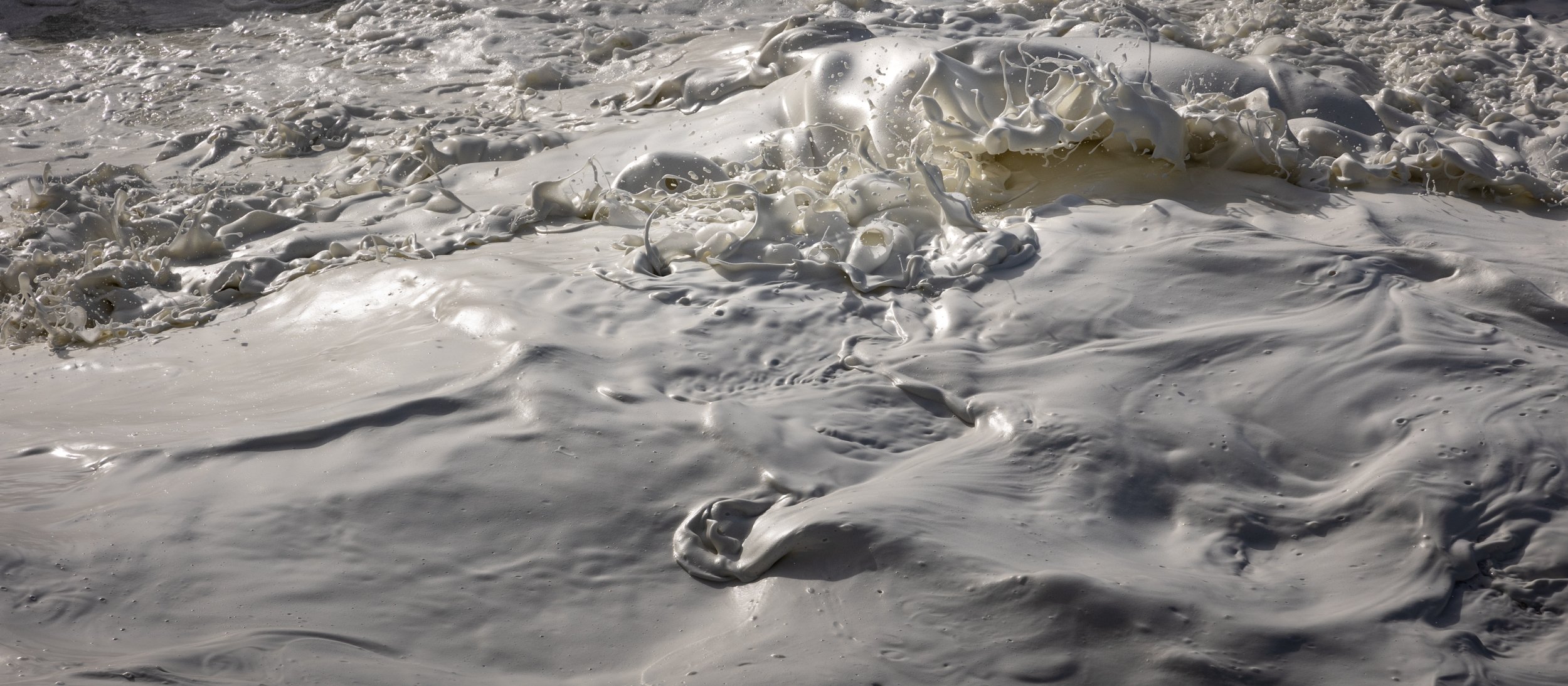It begins somewhere in the North Pacific. Pressure gradients build, wind blows, waves begin the long journey to the rocks of the Oregon coast. The linear wave strikes the chaotic shore. Billions of small plants, animals and other organic things are caught between the weight of the wave and the impassive rock. Their cells split, releasing proteins into the water. The waters churn the protein broth adding air, making bubbles, creating foam. This is The Churn.
Linear waves, a chaotic rocky edge, mark the beginning of The Churn
Water pushed by a thousand miles of wind meets the edge of sharp, unmoving rock shredding the cells of organisms living in the water.
Even between the ocean waves, reflected wave remnants continue the mixing.
The proteins begin to accumulate and change the surface of the water.
The Churn




































































